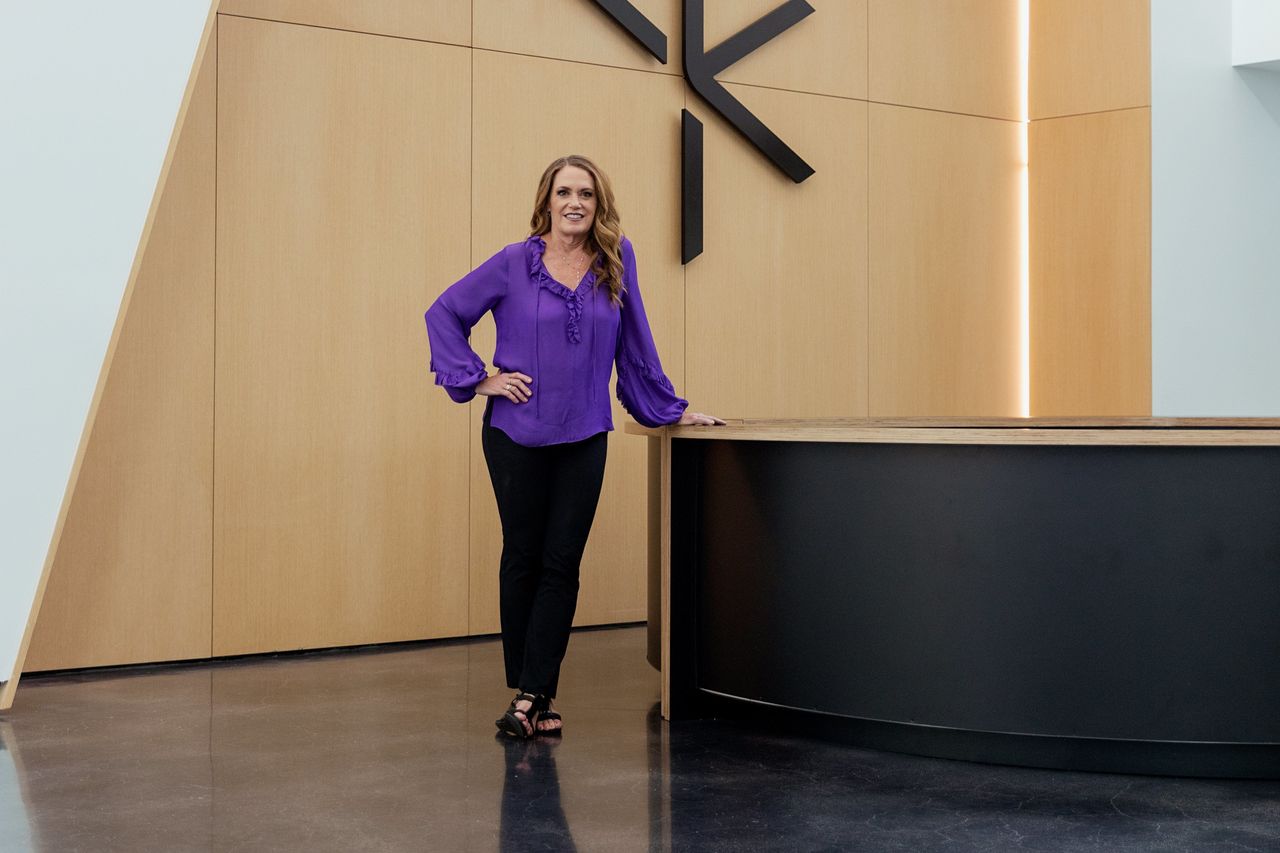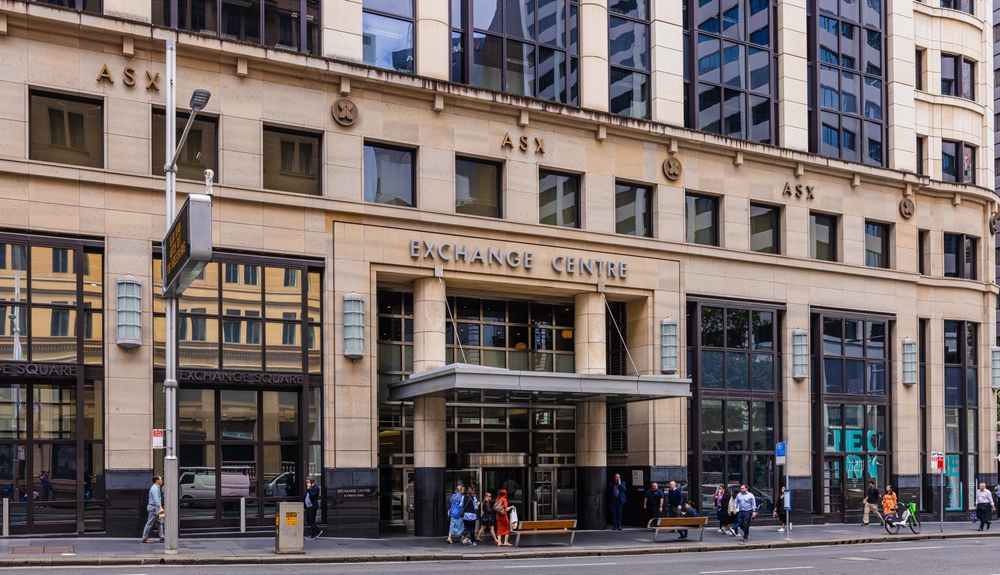What It Will Take for Augmented Reality to Become Our Reality
Peggy Johnson, CEO of AR goggle maker Magic Leap, talks about the real metaverse, how the tech is used on the job, and the innovation needed for non-nerdy glasses.
Metaverse. Metaverse. Metaverse.
Say it three times fast, and you’ll still be confused about the promise of this much-hyped digital world where we’ll apparently work, hang out and more.
Yet Peggy Johnson, chief executive of Magic Leap, can see it clearly. She doesn’t even have to put on the company’s high-tech headset.
Ms. Johnson, who took over the reins of the embattled startup in 2020, sees a future where we put on augmented-reality glasses and view digital information projected within our real world. No more would we be constantly sucked out of the world to stare at a screen in our hand or on our desk or wall.
(Reminder: While a virtual-reality headset blocks out the world so you can escape, augmented-reality goggles add a layer onto it. Think of the windshield heads-up display found in many cars today.)
After 25 years at Qualcomm, Inc. and then six more at Microsoft Corp. as its chief deal maker, the 60-year-old CEO redirected Magic Leap to focus on enterprise customers and business-use customers for its still nascent technology. The Magic Leap 2 headset, expected to ship later this year, is designed to be lighter than its predecessor, with better optics and audio.
The Wall Street Journal spoke to Ms. Johnson about the industries already making AR a reality and what it will take to get glasses that don’t look like a total nerd helmet.
Our lives are dominated by screens. Why do we need augmented-reality glasses?
Right now, we sit in a stationary spot, and we interact through a keyboard with a PC. Augmented reality is going to change that whole paradigm. You’ll be able to look at your physical world and interact with digital content that sits in your physical world. The opportunity is to have a heads-up view and be able to have useful tools embedded in your physical world that will help you get your job done. It’ll help you do things in shorter amounts of time because you’ll have these digital cues helping you.
Magic Leap headsets are already being used on the job. What industries are benefiting from AR?
We have a number of healthcare companies using it because it very precisely and accurately can place digital content in front of their eyes.
For instance, we have a company named Brainlab who’s using it. They scan an image of your brain, and a 3-D image of your brain is now in front of your eyes and it can be used as a pre-surgical planning tool. You can draw the surgical pathway that you want to take.
Another company called SentiAR creates live, interactive 3-D visuals of patient’s hearts during cardiac-ablation procedures, which are performed to correct heart-rhythm problems. Typically, that’s done with a surgeon feeding the tube in but looking at a 2-D screen. Now, they have the ability to map your heart—the actual live heart—in front of your eyes while they’re inserting the catheter, and that just improves accuracy, navigation abilities.
Beyond that, we have a variety of manufacturing scenarios. We think it’s going to be a real tool for the factory worker. You can almost think of it as a computer on their eyes. Their hands are still free to do their job but, for instance, the worker can walk up to a physical machine. Above it can be displayed digitally the statistics of the machine: The up time, the down time, there can be a red flag that says it’s time for maintenance.
With Magic Leap 2, you’ve made hardware improvements but it still requires you to wear a headset that’s attached to a mini-computer on your waist. What are the biggest roadblocks to getting to sleek-looking glasses?
To some degree, we think of this as an advantage. We’ve taken the heat and the weight and put it down on your waistband or your pocket. That has allowed us to make the headset only about 250 grams, about 20% lighter than our Magic Leap 1.
You can draw an analogy between AR and mobile phones. When they first came out, they were big and they got smaller over time. A lot of that was component reduction and silicon integration. So those two things have to happen. It’ll be a few years before we can get to an eyeglasses format. But clearly, that’ll open up a consumer market in a big way and that’s definitely what we’re focused on.
Speaking of consumers, what will be the killer app that gets us all wanting to put these types of devices on our faces?
Enterprise customers were really the first users of mobile phones. I was in that industry back then, and they wanted longer battery life, smaller, lighter, all of those things. So we’ll take all that feedback in and use it as we begin to design Magic Leap 3.
I do think—and particularly because we’re coming out of a pandemic and we’re living in a hybrid world—this idea of 3-D collaboration with others who may be in the room or maybe a continent away is going to be an application that drives consumer use. It could be talking to your grandma on the other coast or it could be talking to your co-workers. To make meetings come to life seems to be the thing that will really drive usage into a consumer format.
We’re hearing a lot about the promise of the metaverse. What’s your outlook on it all?
There are great use cases for virtual reality. A lot of them are around entertainment, training, that sort of thing. It’s somewhat limited because when you’re fully occluded, you’re limited and you can’t move around as easily.
When you can see your physical world and interact with the digital content, that’s the true promise of the metaverse. The technology should just blend in. I think the pandemic will push us more toward that because we have been heads-down for two years and on these little screens.
It’s 2030. What do your job and industry look like?
Maybe I don’t come to work. Maybe I put on my glasses and have meetings. We’re all sort of doing that now since the pandemic but the experience would just be a lot more natural, as if I’m actually in the room with people. The technology is headed there.
Hopefully that is the world we’ll be in in 2030 and we will be back to a heads-up world and not looking down at a little screen in our hands. Our hands will be free to interact with that digital content in our physical world.
Reprinted by permission of The Wall Street Journal, Copyright 2021 Dow Jones & Company. Inc. All Rights Reserved Worldwide. Original date of publication: May 6, 2022.
 Copyright 2020, Dow Jones & Company, Inc. All Rights Reserved Worldwide. LEARN MORE
Copyright 2020, Dow Jones & Company, Inc. All Rights Reserved Worldwide. LEARN MORE
This stylish family home combines a classic palette and finishes with a flexible floorplan
Just 55 minutes from Sydney, make this your creative getaway located in the majestic Hawkesbury region.
As Paris makes its final preparations for the Olympic games, its residents are busy with their own—packing their suitcases, confirming their reservations, and getting out of town.
Worried about the hordes of crowds and overall chaos the Olympics could bring, Parisians are fleeing the city in droves and inundating resort cities around the country. Hotels and holiday rentals in some of France’s most popular vacation destinations—from the French Riviera in the south to the beaches of Normandy in the north—say they are expecting massive crowds this year in advance of the Olympics. The games will run from July 26-Aug. 1.
“It’s already a major holiday season for us, and beyond that, we have the Olympics,” says Stéphane Personeni, general manager of the Lily of the Valley hotel in Saint Tropez. “People began booking early this year.”
Personeni’s hotel typically has no issues filling its rooms each summer—by May of each year, the luxury hotel typically finds itself completely booked out for the months of July and August. But this year, the 53-room hotel began filling up for summer reservations in February.
“We told our regular guests that everything—hotels, apartments, villas—are going to be hard to find this summer,” Personeni says. His neighbours around Saint Tropez say they’re similarly booked up.
As of March, the online marketplace Gens de Confiance (“Trusted People”), saw a 50% increase in reservations from Parisians seeking vacation rentals outside the capital during the Olympics.
Already, August is a popular vacation time for the French. With a minimum of five weeks of vacation mandated by law, many decide to take the entire month off, renting out villas in beachside destinations for longer periods.
But beyond the typical August travel, the Olympics are having a real impact, says Bertille Marchal, a spokesperson for Gens de Confiance.
“We’ve seen nearly three times more reservations for the dates of the Olympics than the following two weeks,” Marchal says. “The increase is definitely linked to the Olympic Games.”

Getty Images
According to the site, the most sought-out vacation destinations are Morbihan and Loire-Atlantique, a seaside region in the northwest; le Var, a coastal area within the southeast of France along the Côte d’Azur; and the island of Corsica in the Mediterranean.
Meanwhile, the Olympics haven’t necessarily been a boon to foreign tourism in the country. Many tourists who might have otherwise come to France are avoiding it this year in favour of other European capitals. In Paris, demand for stays at high-end hotels has collapsed, with bookings down 50% in July compared to last year, according to UMIH Prestige, which represents hotels charging at least €800 ($865) a night for rooms.
Earlier this year, high-end restaurants and concierges said the Olympics might even be an opportunity to score a hard-get-seat at the city’s fine dining.
In the Occitanie region in southwest France, the overall number of reservations this summer hasn’t changed much from last year, says Vincent Gare, president of the regional tourism committee there.
“But looking further at the numbers, we do see an increase in the clientele coming from the Paris region,” Gare told Le Figaro, noting that the increase in reservations has fallen directly on the dates of the Olympic games.
Michel Barré, a retiree living in Paris’s Le Marais neighbourhood, is one of those opting for the beach rather than the opening ceremony. In January, he booked a stay in Normandy for two weeks.
“Even though it’s a major European capital, Paris is still a small city—it’s a massive effort to host all of these events,” Barré says. “The Olympics are going to be a mess.”
More than anything, he just wants some calm after an event-filled summer in Paris, which just before the Olympics experienced the drama of a snap election called by Macron.
“It’s been a hectic summer here,” he says.

AFP via Getty Images
Parisians—Barré included—feel that the city, by over-catering to its tourists, is driving out many residents.
Parts of the Seine—usually one of the most popular summertime hangout spots —have been closed off for weeks as the city installs bleachers and Olympics signage. In certain neighbourhoods, residents will need to scan a QR code with police to access their own apartments. And from the Olympics to Sept. 8, Paris is nearly doubling the price of transit tickets from €2.15 to €4 per ride.
The city’s clear willingness to capitalise on its tourists has motivated some residents to do the same. In March, the number of active Airbnb listings in Paris reached an all-time high as hosts rushed to list their apartments. Listings grew 40% from the same time last year, according to the company.
With their regular clients taking off, Parisian restaurants and merchants are complaining that business is down.
“Are there any Parisians left in Paris?” Alaine Fontaine, president of the restaurant industry association, told the radio station Franceinfo on Sunday. “For the last three weeks, there haven’t been any here.”
Still, for all the talk of those leaving, there are plenty who have decided to stick around.
Jay Swanson, an American expat and YouTuber, can’t imagine leaving during the Olympics—he secured his tickets to see ping pong and volleyball last year. He’s also less concerned about the crowds and road closures than others, having just put together a series of videos explaining how to navigate Paris during the games.
“It’s been 100 years since the Games came to Paris; when else will we get a chance to host the world like this?” Swanson says. “So many Parisians are leaving and tourism is down, so not only will it be quiet but the only people left will be here for a party.”
This stylish family home combines a classic palette and finishes with a flexible floorplan
Just 55 minutes from Sydney, make this your creative getaway located in the majestic Hawkesbury region.






















